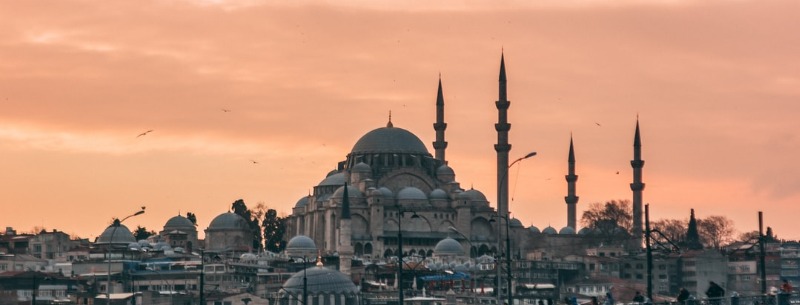Arriving in ISTANBUL can come as a shock. Most visitors head for the old city in and around Sultanahmet , where though you’re still technically in Europe, there are immediate differences: back streets teem with traders pushing handcarts, stevedores carrying burdens twice their size, and omnipresent shoeshine boys. Men still monopolize the public bars and teahouses, while many women cover their heads, averting their gaze. Yet this is merely one aspect of modern Istanbul; only a couple of kilometers to the north you’ll find the former European quarter of Beyoglu , with its trendy bars and cutting-edge dance clubs, while north again is the pavement cafés and restaurants of Ortaköy and the swish Bosphorus suburbs of Arnavutköy, Bebek and Etiler. These days the city has a social and cultural diversity to match any of its Western counterparts.
Istanbul is the only city in the world to have played capital to consecutive Christian and Islamic empires, and retains features of both, often in congested proximity. Byzantium, as the city was formerly known, was an important trading center, but only gained real power in the fourth century AD, when Constantine chose it as the new capital of the Roman Empire. Later, as Constantinople, the city became increasingly dissociated from Rome, adopting the Greek language and Christianity and becoming, effectively, the capital of an independent empire. In 1203 the city was sacked by the Crusaders, and when the Byzantines, led by Michael VIII Palaeologus, regained control in 1261, many of the major buildings had fallen into disrepair, with the empire itself greatly diminished in size. As the Byzantines declined, the Ottoman Empire prospered, and in 1453 the city was captured by Mehmet the Conqueror, who shortly after began rebuilding works. In the following century, the victory was reinforced by the great military achievements of Selim the Grim and by the reign of Süleyman the Magnificent, whose conquests helped fund the greatest of all Ottoman architects, Mimar Sinan. By the nineteenth century, however, the glory days of Ottoman domination were firmly over. Defeat in World War I was followed by the War of Independence, after which Atatürk created a new capital in Ankara – although Istanbul retained its importance as a center of trade and commerce. In recent years, the population of the city has reached twelve million, a fifth of the country’s total, and is still on the rise, adding further to the cacophony and congestion.
The city is divided in two by the Bosphorus , which runs between the Black Sea and the Sea of Marmara, dividing Europe from Asia. At right angles to it, the inlet of the Golden Horn cuts the European side in two. The old center of Sultanahmet, occupying the tip of the peninsula south of the Golden Horn, is home to the city’s main sightseeing attractions: the cathedral of Aya Sofya, Topkapi Palace, and the Blue Mosque, and as such many people find that they spend all their time here. Annoying hustlers mean first impressions can be negative – but thankfully omnipresent tourist police have done much to clear out the worst, and will respond quickly to any problems you may have. Further west near the explorable city walls lies the Kariye Camii, which contains the city’s finest surviving Byzantine mosaics and frescoes. Across the Golden Horn to the north, the Galata Tower offers superb panoramic views over the city.
